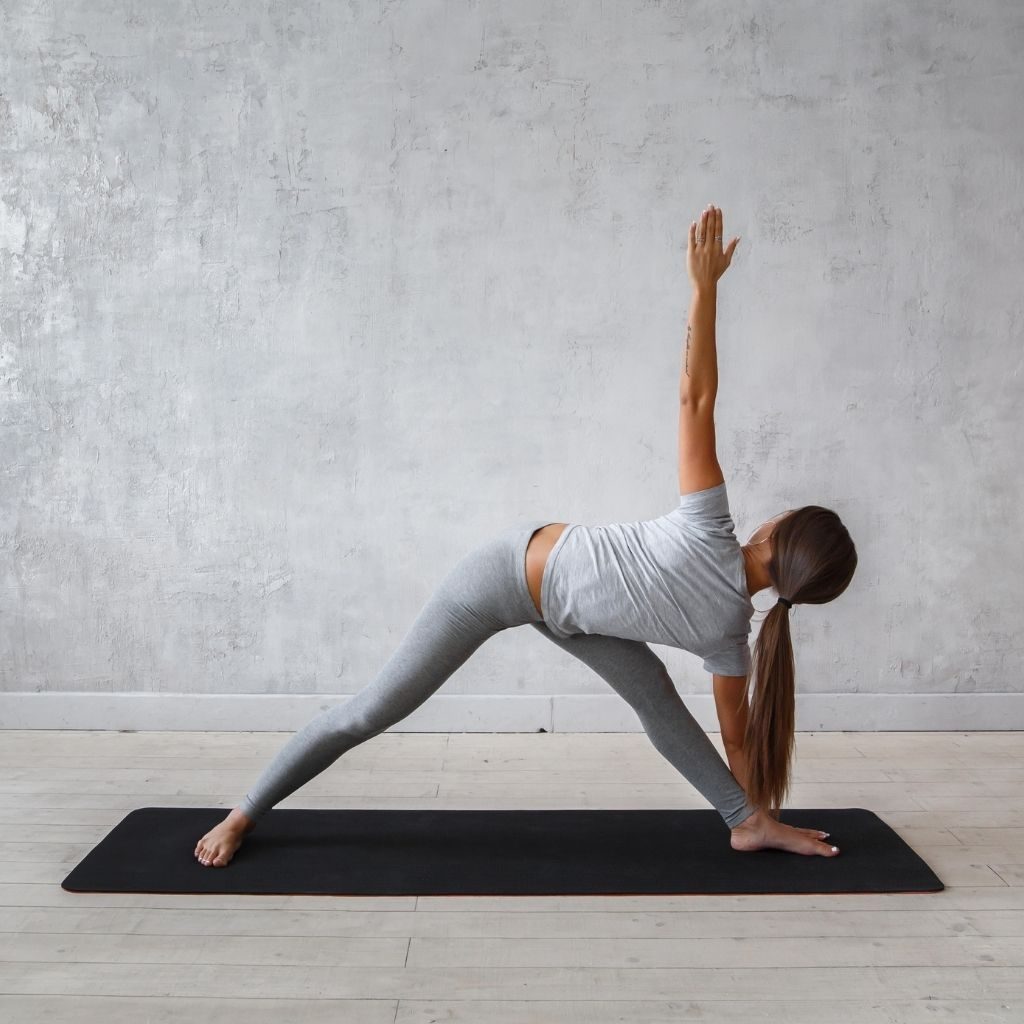Is Yoga Isometric or Isotonic?
Yoga is a culmination of spiritual, mental, and physical disciplines with their roots in ancient India. Today, it has metamorphosed into an exercise in the Western world.
Since yoga primarily consists of ‘asanas’ or postures, it’s imperative to know if it’s an isotonic or isometric exercise.
To put it simply, while yoga does have certain isotonic elements, each pose in yoga is predominantly an isometric exercise.
In this article we’ll discuss everything there is to know about isotonic and isometric exercise.
Let’s GO!
Isotonic vs isometric: What is the difference between an isometric and isotonic exercise?
Exercises are divided into different types depending on the kind of muscle contraction they entail. For ultimate fitness, you should incorporate both exercise types in your daily workout routine.
An isometric exercise keeps the ‘same muscle length’, which means your muscles shorten or do not elongate when a joint bends. Meanwhile, an isotonic exercise keeps the ‘same muscle tension’ uniformly.
Whether you’re exercising for general fitness or to build strength, you must perform both kinds of exercises.
An easy way to remember their meaning is to learn the Greek root of their names. While ‘metric’ means length, ‘tonic’ refers to tension and ‘iso’ translates to ‘same’ or ‘uniform’.

Benefits of isometric exercise?
Isometric strength training exercises are low-impact workouts that strain your muscles without bending or moving the joints.
For instance, when you’re in a plank position, you put your muscles to work even though there is no movement. As a whole, these exercises help maintain stability and strength.
Here are some other benefits of isometric exercises.
Relieves muscle soreness and pain
Although it’s not common knowledge, some studies found isometric exercises to be helpful against different kinds of pain, including neck pain, knee osteoarthritis, and lower back pain.
In a five-week training period study, authors found the group doing isometric exercises to have 33% greater knee strength as compared to the group not exercising.
Strong muscles provide stability to your body, reducing shock transmitted to the joints, and lower the instances of pain and disability.
However, if you suffer from chronic pain, you should always consult with your healthcare provider before indulging in any strenuous exercise.
Slow age-related muscle loss
With age, our bodies begin losing muscle mass, which further results in low physical strength. On top of that, amino acid digestion also slows, delaying muscle recovery after injury or exercise.
Isometric exercises build muscle strength, slowing age-related muscle loss. Besides increasing endurance, they also ensure high muscle mobility, even in older age.
Help lower blood pressure
Back in the day, people with heart diseases and hypertension were refrained from doing isometric exercise. Today, it’s evident that isometric exercises help lower blood pressure.
A recent study has shown these exercises to be beneficial for heart health and blood pressure regulation.
The study found that the systolic blood pressure dropped by 7mm in people who did isometric workouts. The authors report that such a drop is significant enough to prevent heart attacks and other issues.
Muscle activation
Muscle activation refers to the number of motor units recruited by the muscle cells. The more units recruited, the higher your muscle strength gets.
Recent research indicates that isometric exercises can increase the recruitment of motor units by 5%, as compared to other exercise types.
In simple words, isometric training involves around 95% of your muscles while other workouts’ range is up to 90% only.

Benefits of isotonic exercise?
Unlike isometric exercises, isotonic training engages your joints while putting a uniform amount of tension or weight on the muscles.
Bench-pressing and squats are good examples in this regard. Even though your joints bend, the weight stays the same on the whole body.
Isotonic exercises strengthen your joints along with muscles. Additionally, they are also useful against certain health conditions.
Improve sugar regulation
Isotonic exercise is believed to be useful in people with diabetes. A 2017 study reported that women who do isotonic exercises have a 30% lower diabetes rate as compared to the control group.
Build bone density
Isotonic exercises increase bone density. Thus, they’re beneficial for individuals suffering from osteoporosis or those at risk of this condition.
Research shows that athletes who do weight lifting have a higher bone density and mass than athletes who perform other kinds of exercises.
Higher bone density reduces your risk of developing a disability or being prone to fractures.
Improve cardiac health
Since isotonic exercises increase blood circulation, they raise the heart rate and lower the chances of heart attacks and strokes.
Additionally, they help regulate blood pressure.

Isometric yoga poses
Try these isometric yoga poses to build your muscle strength and regulate blood pressure.
PLANK POSE
Start by getting into the Tabletop pose. Then, move your torso forward, making the arms perpendicular to the floor.
Your torso should be in the same line as the floor while the shoulders perpendicular to the wrists.
Lift your hips slightly. You’ll notice your core activating as isometric contractions start in the body. Make sure your collarbones are facing away from the sternum and hold this pose for 30 to 60 seconds.
Here’s a video to make it simpler.
LUNGE POSE
Start in a low lunge position and drop your left knee to the floor. You can keep a blanket on the mat for added cushioning.
Keep your right knee over the right ankle while bringing the hands to the right knee. Inhale while raising your arms above your head.
Make sure your arms stay in the same line as your ears.
Then, exhale and bring your hands down. Release and repeat on the other side. Here’s an instruction video.
Isotonic yoga sequences
Although yoga is primarily isometric, you’ll also find some isotonic sequences in practice.
Yoga push-up (Chaturanga)
The yoga push-up or Chaturanga works the triceps, glutes, lower back, hamstrings, chest, and shoulder muscles.
Start by getting into a push-up position. Your whole body should form a straight line. Only the hands and feet must touch the floor.
Keep your feet slightly apart and your hands at shoulder-width apart. Bend your elbows, lowering the chest, and keep your elbows pointing backward.
Hold the position for five to ten seconds.
Inhale and lift your chest back up. Straight your arms, hover your hips and release the pose. That was one rep. You can do as many as possible.
Here’s a video tutorial to help you learn the yoga push-up.
Conclusion
Considering its dynamic, one can say that yoga is an isometric exercise since it does not involve the joints actively. However, some isotonic sequences, like Chaturanga, may also be involved in yoga.
Besides building muscle strength, these yoga poses also help relieve stress, regulate blood sugar, and lower blood pressure. So, sign up for a class today and give your body a reason to thank you.
Isometric exercises involve muscle contractions where the length of the muscle does not change. These exercises are often performed against an immovable object such as a wall or a weight lifting machine. Examples include holding a plank or a wall sit.
Isotonic exercises involve muscle contractions where the length of the muscle changes. These exercises typically use free weights or resistance bands. Examples include bicep curls and leg press.
Both isometric and isotonic exercises of exercises can be effective for increasing muscle strength and endurance.
However, isometric exercises may be better for targeting specific muscle groups, while isotonic exercises may be more effective for overall body conditioning.
Read also:

